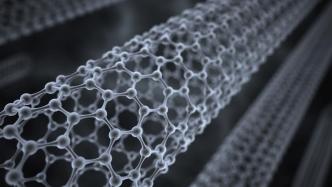
A research team led by Northwestern University and the University of Texas at Austin has developed the thinnest cardiac implant ever made of graphene, according to a paper published in the latest issue of the journal Advanced Materials.
The new graphene implant resembles a disposable tattoo in appearance and is no thicker than a hair, but still functions like a traditional pacemaker. Unlike current pacemakers and implantable defibrillators, the new device gently fuses with the heart while detecting and treating arrhythmias. It is thin and flexible to fit the delicate contours of the heart, but also has enough elasticity and strength to withstand the beating of the heart.
The study demonstrated that after implanting the device in a rat model, the graphene "sticker" successfully sensed irregular heart rates and delivered electrical stimulation through a series of pulses without restricting or altering the heart's natural beating. Additionally, the graphene implant is optically transparent, allowing the researchers to use an external light source to record conditions and stimulate the heart through the device.
Arrhythmia occurs when the heart beats too fast or too slow. In severe cases, arrhythmias can lead to heart failure, stroke and even sudden death. Doctors typically treat it with implanted pacemakers and defibrillators, devices that detect abnormal heartbeats and then correct the rhythm with electrical stimulation. However, they are not flexible enough and may restrict the heart's natural beating, damage soft tissue, cause temporary discomfort, and may cause complications such as swelling, perforation, blood clots, and infection.
After screening a variety of materials, the researchers finally chose graphene, a "miracle material" with excellent biocompatibility. Graphene has a super-strong, lightweight structure and high conductivity, and has potential applications in high-performance electronics, high-strength materials, and energy devices. The new soft, flexible graphene implant is not only unobtrusive, but fits directly into the heart tightly and seamlessly, providing more precise measurements.
(Original title "Graphene made the thinnest heart implant so far")

